Index
Ethiopia
2008
I have booked a holiday to India but due to unknown reasons this trip is cancelled. I’m offered an alternative to Ethiopia. I love Africa, my roots lie there, but I’ve not been here yet. Ethiopia is not geared up as a tourist country, so hotels outside the capital are limited. It has approximately 78 million inhabitants and spans an area of 1.1 million sq km (426k sq mi). It is one of the oldest countries in the world. Upon discussing travel weight allowance I have a bit of a battle on my hands with the travel agent. Allowance is limited to 15 kg per person. I’m already carrying >12 kg in photo equipment and that doesn’t even include spare batteries or chargers. After a lot of emails flying around helped by the fact that only 7 travellers instead of 10 will go on this trip we are each allowed 20 kg. This weight is governed by the loading capacity of the local flights we will make in Ethiopia.
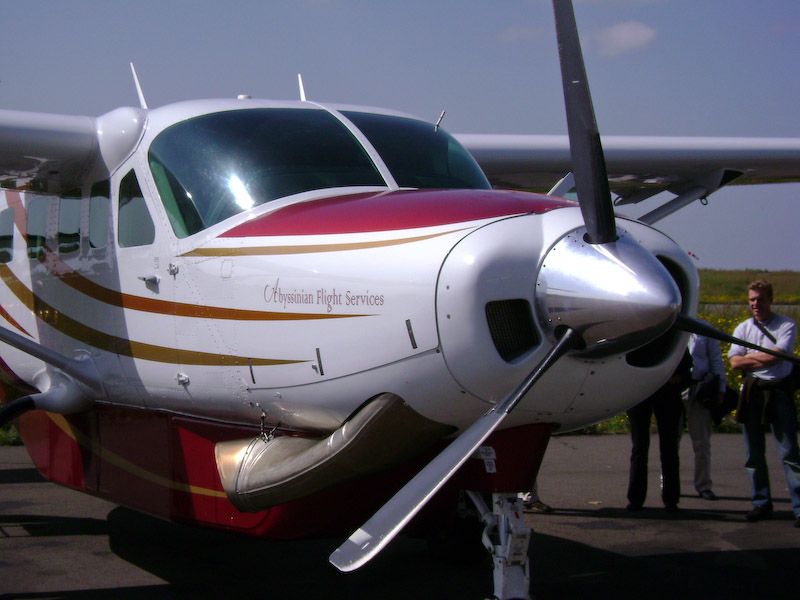
I arrive in Addis Ababa with a flight from Amsterdam via Frankfurt. We check in to the Hilton and meet our host Steve Turner, owner of Kenya based Origins Safaris. We enjoy a leisurely day in Addis. I remove the sports-bag from my suitcase and repack for my trip up north to Lalibela, Gondar and Simien mountains. The suitcase with ‘summer clothing’ will remain in the Hilton.
Local flights are organised by Abyssinian Flight Services. Our group of seven will make five flights with this small service. A US missionary group owns the plane. Lalibela can be reached by road but travel time is tremendously long and the roads are not good. It is well known for its rock hewn 12-13th Century churches. They are on the Unesco world heritage list.
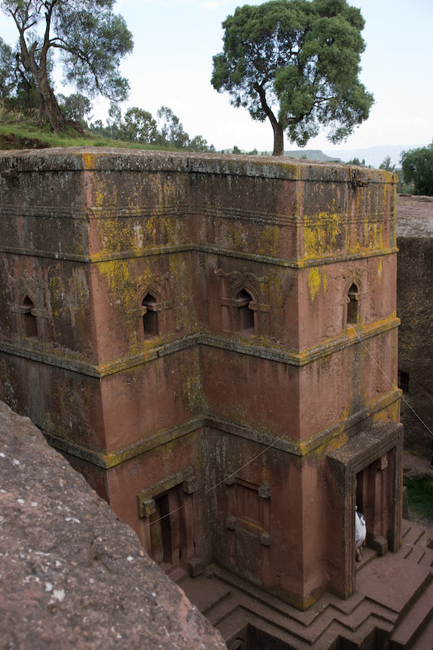
To protect them from the elements, enormous Unesco roofs cover almost all of the churches. There’s one exception, where the builders had the foresight to add gutters. It’s mind boggling to see how these churches were hewn out of solid rock. Photography here is no problem and people are happy to have their picture taken. Of course some kids will latch on to you for a while. I’ve become an instant ‘uncle’ on several occasions when my hand was grabbed by a 4-6 year old for a while. The teenagers all seem to be students and after a while will ask for your email address and some money to pay for school fees.
Unfortunately tourists, mostly Americans, have messed up the youth by handing out large sums of money to get ‘rid’ of these kids whilst walking around. Now everyone thinks tourists are stinking rich. This can inhibit photography, as they want money in return. Whilst visiting one of the many churches we stumble upon a wedding, an added bonus to this trip.
Our next flight takes us to Gondar, we enjoy a nice lunch and then board our 3 Toyota landcruisers (approx 20 years old or so) for a 3.5 hour drive in to Simien Mountains National Park. The park is an official park despite the fact that several people farm within its boundaries. The threat of famine is so high that government can ill afford to keep people out. It is incredible to see how farmers can work a piece of rock-strewn hillside and still harvest a crop (assuming they get rain). Really, Western farmers should see this first hand. That would shut them up. We arrive at the lodge only to find that the electricity has gone out in half the country. During the day the temperature is quite bearable but in the evening it can get quite cold. I was wearing three layers of clothing but I just couldn’t get warm in the evening. As we had no hot water, showers were extremely cold and the towel remained damp. We spend 2 nights here.
During the daytime we travel in search of Gelada. These animals live in troops of up to 300-400 and graze the whole day. It is quite an experience to see these animals up so close. They have no fear of people and are quite approachable. They feed exclusively on grass. In the evening they all go over the cliffs and use very small ledges to sleep on. They basically cling on during the whole night to avoid being caught by leopard and or hyena. Further up in to the hills (± 4000 - 4500 metres) we are fortunate to see Walia Ibex (mountain goats) and upon our return to camp we have another treat: the Lammergaayer with a wingspan of approx 3 metres.
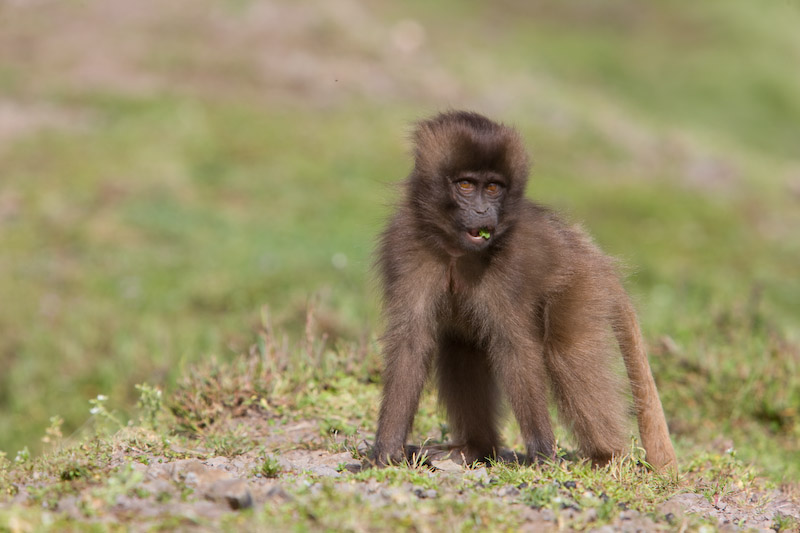
We return to Gondar by 4WD and board our third flight back to Addis for an overnight stay. Upon arrival in Addis we repack our bag for more tropical weather and left the ‘winter clothing’ in the suitcase in the hotel. The next morning a two-hour flight takes us to Murulle airstrip. Just one short hop in a jeep and a speedboat gets me to the main camp on the river Omo. Temperatures are hot, extremely hot. This trip cannot be considered a normal holiday, more of an expedition and despite the 400million bugs, extreme heat or cold I would not have missed it for the life of me. We are here for 5 nights followed by an additional 3 nights further down the Omo. Very early in the mornings 05:00 - 05:30 we get up to visit to a tribe. Breakfast is not always possible due to the distant location of the tribes. In those cases we have brekkie upon return. To visit these tribes we rely on our speedboat and legs. There is only one touroperator in this area. Did I mention Ethiopia is not yet geared up for tourism. What we get to see is beyond the impression a backpacker will get to see when making use of the overland truck holidays. Approximately 50 visitors per year get the same experience as I did. Below I’ll give you a brief description of each of the tribes I visited and photographed extensively.
Karo
The Karo people, who speak an Omotic language, are a small group (± 1,000 people) occupying the eastern bank of the Omo River. They are closely related to the Banna-Bashada-Hamar, group and the Dassanech-Arbore. According to their oral tradition, the Karo believe their roots are as herdsmen who migrated to the mountains of the Hamar and Banna peoples. They lived there for some time until one day their livestock disappeared in search of water.
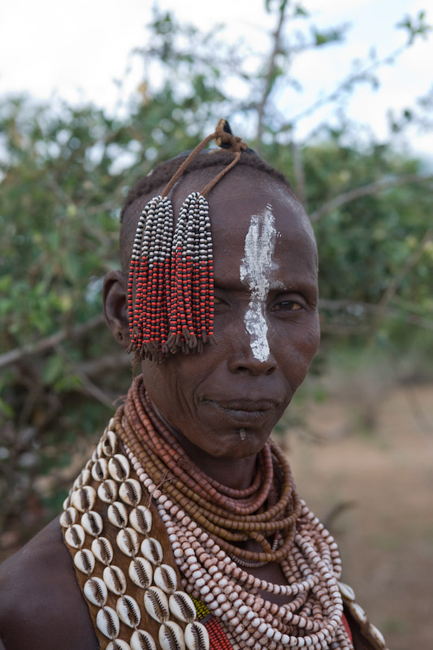
The livestock eventually returned, but when they disappeared again, the Karo followed them. This is how they discovered the existence of the Omo river and came to settle on its banks. However the tsetse fly wiped out their herds and they ended up dedicating themselves to agriculture in order to survive (sorghum, corn and beans). The Karo established symbiotic agro-livestock relations with their neighbours the Hama-Banna-Bashada and the Dassanech. Nowadays supplement their survival economy with beekeeping and fishing, which was taboo until necessity drove them in to it recently. Only single young men are allowed to fish, but they must complete a purification ritual immediately afterward. A similar adaption occurred with hunting. Necessity was joined by the social prestige acquired by killing a dangerous animal.
Nyangatom
The Nyangatom have grown in numbers to ± 7,000 individuals. Their attempts at expansion in the last few years have caused continual confrontations with their traditional enemies, the Mursi, Karo and Dassanech. Their proximity to Southern Sudan has made it easy to acquire arms. Ornamentation of the women is designed not only for beauty, but also to assert the woman's social status. Both men and women have labial piercings. One bracelet is particularly intimidating - it is a disc shape with filed edges.
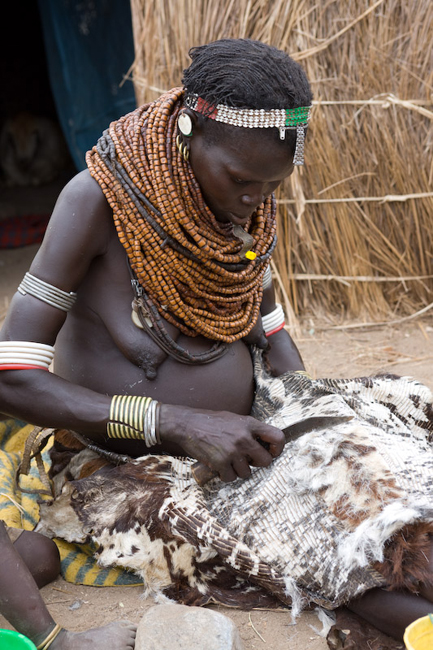
Mursi
The Mursi practice hoe-cultivation and cattle herding. Cultivation accounts for well over half their diet while cattle, apart from being an important source of milk (especially for children) and meat, are a vital standby at times of crop failure, when they can be exchanged for grain in the highlands. The main crop is sorghum, of which they possess many drought-resistant varieties, but they also grow maize, beans and chick-peas. There are two harvests each year, one along the banks of the two permanent rivers, Omo and Mago, where fertile silt is deposited by the annual flood, and one in forested areas further back from the rivers which are cleared for rain-fed, shifting cultivation. Planting takes place at the Omo and Mago in October and November, after the flood has receded and the banks have been cleared of vegetation that had grown up since the previous season.
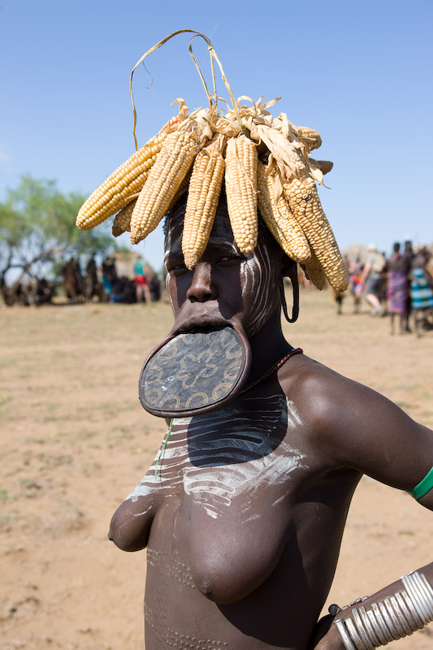
Because of their relatively low cattle numbers, the low and unpredictable local rainfall and the wide annual fluctuation in the level of the Omo and Mago floods, they must integrate all three of these activities by means of a complex cycle of seasonal movements. The harvest comes in January and February. River-bank land is the most valuable agricultural resource the Mursi possess. Areas liable to flood lie on both banks of the rivers, depending on the curvature of the meanders. Between October and February, when the bulk of the population is at the Omo, the cattle are kept in the wooded grasslands which rise towards the Omo-Mago watershed. The Elma valley is particularly important at this time, because it is relatively free from tsetse flies and water can usually be found at various points, even at the height of the dry season.
Hamar
The Hamar occupy a mountainous region in the eastern part of the lower Omo valley.They have integrated with many of their neighbours and currently make up the biggest Omotic language group in the lower Omo region (± 15,000). The weekly markets in Dimeka and Turmi are meeting points, not only for the Hamar but also for neighbouring groups. The agro-livestock connection is clearly demonstrated in these markets. A family's surplus, be it agricultural or livestock helps them to get what they lack. Transactions are based on daily or weekly needs. Hamar women are some of the most elaborately dressed women of the region. Their goatskin skirts are almost always decorated with coloured glass beads which stand out in little patterns against the brown hide. The front of the skirt is edged with beads or small pieces of metal whose weight increases at the top of the triangle and causes the skirt to always fall between their legs, thus protecting their decency.
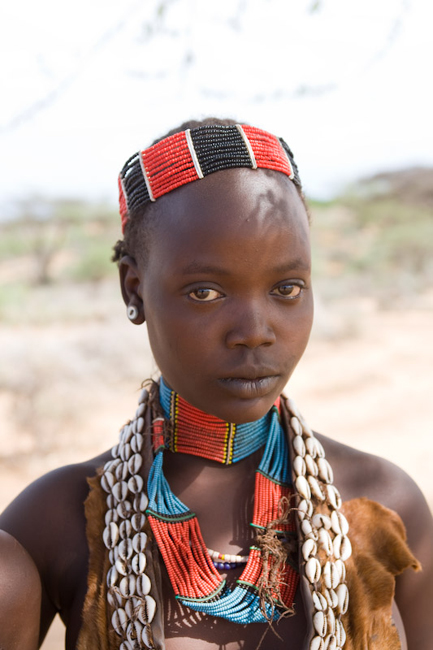
The profusion of metal bracelets on their arms and legs also adds to their ornamentaion. The hair is thoroughly covered in a mixture of grease and red ochre colouring. The young girls flatten it and make little tufts, while the married women wear an elaborate plait which covers the forehead and falls down at the side to the shoulders and back. On day 5 early morning we have breakfast, our bags are packed for a trip down river towards the border with Kenya and lake Turkana. The trip by speedboats is roughly 4 hours. The distance as the crow flies is not that large but due to the fact that the river turns on itself all the time we still cover a lot of water. The highlight of this trip is hitting a croc at full speed. The 250hp outboard motor flips upward and crashes in to the rear of our boat, the engine immediately cuts out. The croc thrashes about in the water. By the time we stop it has disappeared from sight. The engine is restarted and we carry on downriver. Our second camp is a bit more basic than the first. The tent is a bit smaller and we sleep in sleeping bags on a camp bed instead of a normal bed. It is here where we visit the Dassanech tribe. One of their villages lies next to our camp. A 20 minute hike and we’re in the middle of their settlement.
Dassanech
The Dassanech occupy land on both sides of the Omo river and northern edges of lake Turkana. Their population is ± 25,000. They consider themselves livestock farmers but complement this activity with the seaonal cultivation of crops on the flooded banks of the river and lake. They follow a complex age and generation system, saying that a man cannot live without his generation. Power is vested in an elite group of about thirty elders called "bulls". It is within the tribal section that the two most important collective ceremonies in the life of a man are celebrated: circumcision and the dimi. Despite being a male-dominated society, the birth of a daughter is a prerequisite for participating in certain ceremonies. In theory, only a man who has had a daughter can be circumcised, although in practice, circumcision is carried out on the entire age-group. The daughter is most important in the dimi ceremony.
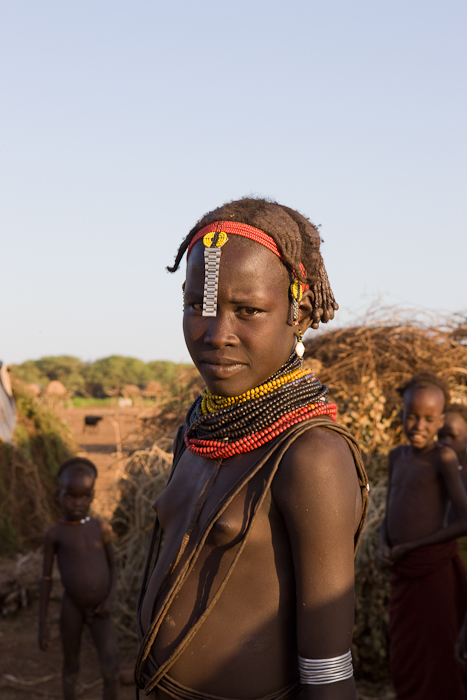
The whole population of a tribal section attends this ceremony where, for six weeks, there will be meals, dances and rituals. The climax of the ceremony occurs when the leader of the "bulls", blesses the girls for whose fertility the whole ceremony is performed. This ritual is crucial for men. Upon the birth of a girl, the ceremony may occur, but it is usually postponed for a couple of years until the required resources are obtained. Once the ceremony is complete, a man is recognised as an elder regardless of his position in the age-system.
Dimi ceremony
We get some really good news, there is a Dimi ceremony close by so on our second day at this camp we forgo breakfast, wake up very early and take the boat towards a Dimi settlement. This is a temporary village built specifically for this ceremony that lasts 6 weeks. After a half hour negotiation between our local guide and the elders we can enter the settlement. I first pay my respects to the elders. The morning dancing is about to start. This dimi settlement is large, there are at least 50 men participating in this ceremony. The man and his wife dress up. The man wears a leopard skin, ostrich feather cap and carries a very long stick, the tip wrapped in a leather strap, and a ritual shield. The woman dresses up in colobus monkey skin. Family members gather around the hut and singing and dancing commences. After a few minutes the 1st couple move on to the next hut to pick up the second couple and the group grows. The huts are placed around a huge square. Square is perhaps not the best word for it, keep in mind we are in the middle of nowhere. The next couple is picked up and so on. Within half an hour or so all participants have gathered and form two lines. The men stand on one side and the women facing them. There’s dancing (= jumping up and down) and singing. This goes on for about an hour and I take hundreds of pictures from all angles. When the dance finishes the village returns to normal business till evening when no doubt singing and dancing will commence again.
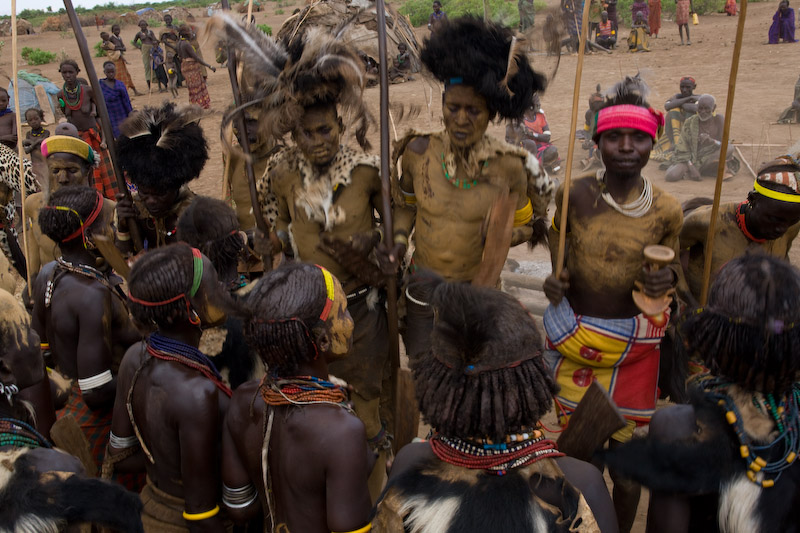
The dimi is a crucial ceremony for the male Dassanech population. One of its main goals is to strengthen bonding and kinship within the tribe. They have to give away all their worldly goods, this usually means their cattle. They must be married and have at least one daughter. Then they may participate. This explains why you see men of different ages participating. To get married you need to pay your in-laws a dowry. This can go up to 120 or so goats. That in itself is huge. Not all can afford this at a young age. Once you’re married you also need to produce a daughter too. The dimi doesn’t happen every year. It relies or the availability or resources (beer, food etc). To my knowledge it has never been photographed by a professional and the last one that was organised was eleven years ago. Chances of seeing this ceremony are therefore extremely rare. I have been very fortunate to witness this ceremony as it was close by and happend to take place during my visit. On the third day we take the speedboat for a trip down to Lake Turkana. The wildlife we see consists mainly of various birds.
It’s the last night of our stay here. Around 03:00 it starts to rain, I’m still awake. Not long after the rain starts a few local staff run towards the tents to close down the flaps that will keep the rain out. I’m sitting outside watching the impressive lightning spectacle for 30 minutes or so before I return to bed in the hopes of getting some sleep. A few hours later we enjoy breakfast in the mud. This morning we will be leaving the Omo. Bags are packed and we board the speedboat with excess mud clinging to our shoes. We arrive at the airstrip and our flight arrives right on time, perfect timing. I’m glad I wont be cleaning the plane, as we cannot avoid bringing in some mud that is still clinging to our shoes. A few hours later we arrive at the Hilton in Addis again. Staff sees a sorry group of travellers walking in, dirty shoes, trousers & shirts. The hotel caters for business reps. This is basically the end of our trip. We have an overnight stay in the hotel and will depart the following evening for our return flight to Amsterdam.
Equipment used:
- Canon 1D2 MkIII with 28-70 2.8L lens.
- Canon 1D Mk II with 70-200 2.8L IS.
- Canon 1.4 Mk II extender.
- A small pocket Sony cybershot for candids and recording small 15-30 sec. movies.
- Asus eeePC with 320Gb HDD.
Top Index